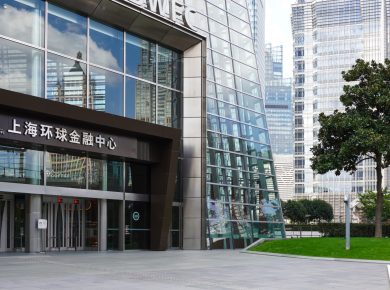Retailing is a very interesting and lucrative business to undertake but it calls for a lot of planning before it is done. A good business plan is a compass that will lead you in the establishment and expansion of your retail store. The following is a basic guide on how you can write a retail store business plan that will help you in setting up your retail business. Check the similar posts on our business page of the site.

1. Executive Summary
The executive summary is the first part of the business plan; however, it is usually written last. This section gives the most basic information about your business, tagged business name, business location, business products and/or services, and business mission statement. It is also where you recap your business goals how they will be achieved and by whom.
Key components:
Business name and location
Be sure to indicate your business name and the physical location of the store.
Brief description of products or services
You need to give an idea of the products or services you are going to launch. State any specialities or high-need products.
Mission statement
Briefly describe your business and its purpose and differentiate it from other competitors. For example, “To be a popular cheap and environment-friendly fashion brand which focuses on its customers’ satisfaction and promotes sustainability.
Business objectives and goals
Describe your plan for the next six months and the next two years. Some of the tactical objectives might entail launching a store, generating first months or week sales, and securing clients. Long-term objectives may include the number of stores to open, franchising, or opening the restaurant’s webpage.
Summary of financial projections
Offer investors a conceptional indication of your previous year’s and your projected year’s financial outcome. Include reference to some of these aspects such as revenues, anticipated profits, and break-even analysis.
2. Company Description
Here, give full details about your retail store. Describe why people need to shop in your store and not the competitor, and what makes your store special and unique.
Key components:
Business structure
State the business structure of your business (for instance sole trader, partnership, joint stock company among others). Fill in details such as who owns how much, and if ownerships of the company are relevant to the game.
History and background
Explain when your business was started and any experience which you have in running a business. Precisely, you should describe the reasons that led you to the specific establishment of this particular retail store.
Unique selling proposition (USP)
Understand how you are different from other stores and why clients will go for your store. For example, “The store muff is unique and features local handmade products which one cannot find in other stores in the region. ”
Market needs
Mention some of the particular market requirements that your store will satisfy and how you ascertained these. Source your statements with market data, for instance, questionnaires or investigations carried out by other organizations.
3. Market Analysis
Market analysis is a process that enables a business to gain proper insights into the industry in which the business will be operating, the target consumers, and competitors. This section should show the market available and the unique plans for getting a fair share of the market.
Key components:
Industry overview
Summarize the most important information about the retail industry; its current state, development prognosis, and leaders. State any regulatory or economic predictors that may affect your business.
Target market
Segment your market; you should be able to identify the age, gender, income level, style, tastes, etc., of the target market. Make customer avatars to enhance the understanding of the target clients.
Market size and growth potential
Make a SWOT analysis of your potential competitors in your target market. Collect data from legitimate sources like journals and published companies or from the government.
Competitive analysis
State the key competitors in the market, their capabilities and threats, and how you are going to out-compete them. Strengths, weaknesses, opportunities, and threats analysis of each of the main competitors has to be carried out.
Market trends and consumer behaviour
Research the present strategies that are influential in favouriting certain policies that may affect your company. Called trends they are things like; seasonality, shifts in trends, and developments in technology.
4. Organization and Management
Describe the business format of your retail store and acquaint the reader with the members of your management team. This section should demonstrate the capabilities of key employees and how their skills will be useful to the store.
Key components:
Organizational structure
Give details about your company’s management structure through charts or simple descriptions. Provide information about companies’ divisions, like the sales and marketing division, operations division, and division in charge of finance.
Ownership information
Describe the partnership/shareholding structure of your business in percentage in case of a partnership or shareholders. List any other major investors if any.
Management team profiles
This report should contain biodata and the experience of the key personnel of the management team. Explain the duties of those positions within the company and how their specializations will help in reaching the business objectives.
Roles and responsibilities
The other aspect is to ensure that there is communication to include the presentation of the various roles expected of each team member. For instance, the store manager may be expected to oversee the day-to-day running of the store, employee relations, and consumer relations, while the marketing manager oversees sales promotions and social media presence.
5. Products and Services
List down the types of commodities your retail store will be selling. Describe the specific characteristics of each product and provide details on how they satisfy the needs of your target consumer and the company’s vision for a future line of products or services.
Key components:
Product descriptions
Provide qualitative descriptions of each of the products or services you will be offering. Enumerate and call attention to any features or added values that are the company’s promotional points and selling propositions, including the pursuit of sustainability and green living.
Pricing strategy
Describe why your product is or is not priced low and how your business’ price compares to those of your rivals. Explain terms such as the cost of goods sold (COGS), profit margins, and customer’s perception of pricing.
Sourcing and inventory management
Explain how you will acquire your products and the stock management recruitment techniques. Any affiliation that was made with the suppliers, manufacturers, or distributors should also be stated. Talking about specific methods; for example, just-in-time inventory or conditions to reorder the product from the supplier.
Future products or services
Ask about their plans, if they have plans of adding more products in the future, or if they plan on expanding the services they offer soon. For example, you may plan on changing products depending on the time of the year through the introduction of new seasonal wear or including options for customization.
6. Marketing and Sales Strategy
The marketing and sales plan is a description of how you intend to acquire and maintain the target clientele. This section should describe the promotion methods you have for your products or services, as well as sales strategies and customer loyalty techniques.
Key components:
Marketing strategy
Describe your general marketing plan and your plans for both, on and offline marketing. These could encompass social media marketing, SEO, email marketing, affiliate marketing/working with influencers, and print media/advertisements.
Of special importance is the fact that the current plan must contain a solid and clear set of marketing strategies, as well as their time frame and cost estimation.
Sales strategy
Provide details of your sales plan particularly, the sales techniques, and sales techniques adopted by your business such as the physical stores, online platforms or third parties. Elaborate on how you will be training your sales personnel and how rewards will be offered to boost performance.
Advertising and promotional plans
Explain the strategies for advertising and promotions that will be employed in the next quarter coupled with any campaign, discount, or event planned. Discuss any special offers that were being given on the opening of a new branch or End of year / December sales.
Customer service and retention
Describe your attitude towards customer services together with your plans on how to maintain the customers through rewards, unique offers, and messages among others. Explain how customers’ suggestions will be collected and used to enhance the shopping experience.
7. Financial Projections
The financial projections segment also involves assumptions of your retail store’s future financial activities. These latter include income statements, cash flow statements, and balance statements prepared on an estimate basis. Thus, it is imperative to have these projections based on reasonable assumptions and adequate research.
Key components:
Revenue projections
Use the expected sales revenues when calculating from your market research and the sales further plan that you have prepared. This should also include prognostic appraisals in the form of actuals of the first year with probably monthly split and generic prognosis with the following three to five years.
Cost of goods sold (COGS)
Estimate the price of the goods, which you are going to sell. Enumerate information about the supplier, terms at which the merchandise was bought, and if there were any changes in the expenses that are expected.
Operating expenses
Write down all your planned operating expenses this includes, including rent, utility bills, salaries, marketing costs, and any other costs that will be incurred in the running of the business. It is essential at this point to divide these into the fixed expenses and the variable ones.
Cash flow projections
Make a budget monthly/quarterly cash flow where you specify how will be obtained and used in the business. Employ other facts with the timing of revenues or expenses and any anticipated issues on cash flows.
Break-even analysis
Select for which month you planned to have your first Positive cash flow which is the month in which earnings will correspond or even exceed expenditures. This in a way assists you in realizing the number of bars you require to turn a profit and this is the break-even point…
Profit and loss statements
Of the forecast, it is advised that you should prepare the profit and loss account forecasts for at least three years of the business. It is also necessary to input specific assumptions and details that translate into the above-mentioned forecasts.
8. Funding Request (if applicable)
If you are currently locating finance for your intended retail store, this section should indicate your needs, funds availability, and how you plan on using the funds. When asking for funds, one must be as quantitative as possible when it comes to the amount required, the details of the expenditures, and the goals of the proposed project.
Key components:
Amount of funding required
It’s supposed to be simple: do not complicate the message and tell people the sum required directly. Further break down the said amount into a finer classification such as inventories, application, increases in marketable products and services, and working capital.
Purpose of the funding
It must state how the money will be spent. The specific budgets for every category must be prepared and one’s outlook on the spending must be explained.
Potential funding sources
Look at where the money would be gotten from, if it would be in the form of a loan, investment, or a grant. Describe how you will obtain the mentioned funds, and the pacts made or to be made for acquiring the funds.
Repayment plans
If you intend to make the repaying of the loans, then the rate of interest and duration required to repay the loans should be stated. Make the following statement coherent by providing a plan of how you will be in a position to come up with the money for the repayment schedule
9. Appendix
This is a section that accommodates any material that affirms the business plan but could be ineligible to form part of the proposal. This will comprise resumes, legal docs, product images, and any other relevant paper.
Key components:
Resumes of key personnel
Do provide the curtailed vitae of your management team, as you ought to demonstrate their experience and educational background.
Legal documents
Supply copies of legal documents like business licenses, permits, and contracts as may be applicable. invite any documentation which shows that the party has the right to the use of any trademark or patent.
Market research data
Additional information about the market that you were able to get from the research. This could be from surveys, reports that are published by the industry, or reports from departments within the government.
Product images and descriptions
Give pictures and elaborate descriptions of your products. It is used to convey any product feature, sources of purchase of the product, and the cost.
10. Final Tips
Keep it concise
However, the business plan preferred should not be bulky but rather accurate and easy to understand. ‘The language used should be very plain and as much as possible free from professional terms and acronyms’. Boil it down to give only the most important details as briefly as possible.
Use visuals
Without charts, graphs, and images, it becomes drab to read and hence not very engaging particularly when you writing a business plan. The next level of information presentation makes reading large quantities of data less difficult and provides an adequate quality to the document.
Update regularly
Business plans are working documents. It should be updated from time to time especially to incorporate new or altering business, market, or industry trends. Also, it is crucial to review the plan systematically to track changes and update the plan according to the current processes.
It can also be said that the development of a comprehensive and quality business plan is one of the most important procedures for starting and further successful functioning of a retail store. Following these steps, you’ll be ready to work effectively to face all the issues and prospects of the retail area. Good luck!








